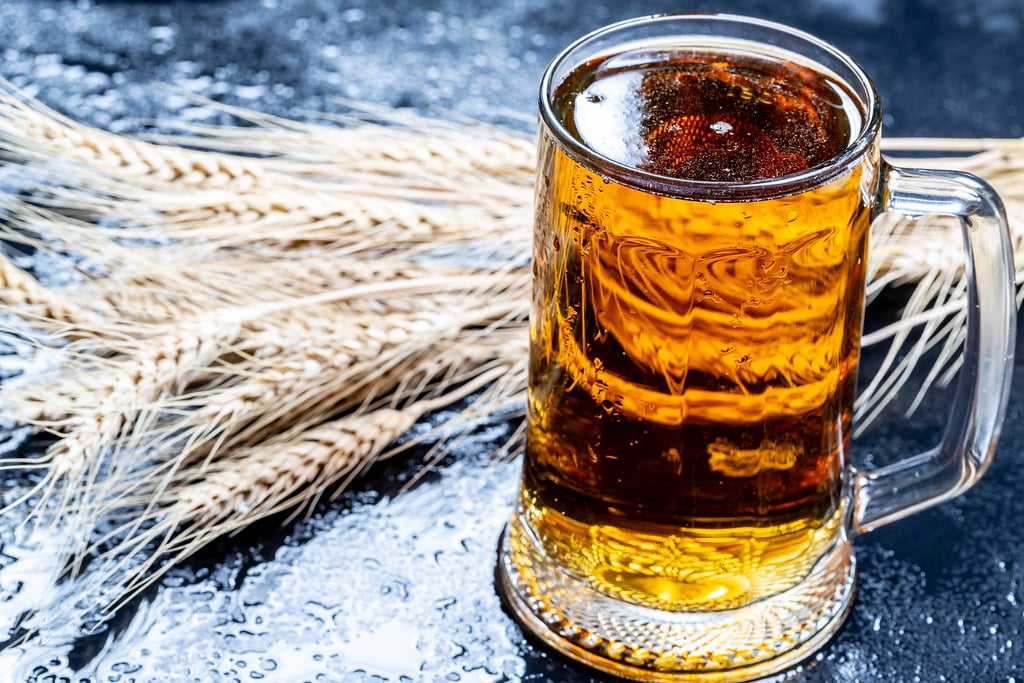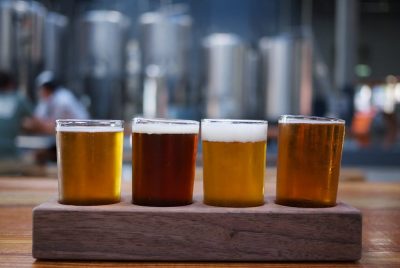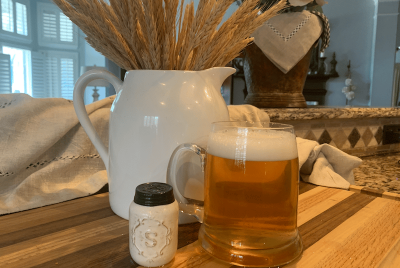If you frequent brewpubs, you’ve most likely heard of the term “beer flight". However, if you’re…
What is Ale Made From?

It’s not easy to answer this question without it seeming like a dictionary entry. By excruciatingly simple definition, ale is any fermented beverage made with a cereal grain. Specifically, ale is made from these four primary ingredients: water, grain, hops, and yeast.
Ale is All About the Water
The quality of brewing water is critical because ale is about 90 to 95 percent water. The mineral content of water can be altered and modified to meet the needs of the brewing beer type.
Then the Grain
Barley is the most commonly used grain, however other grains such as rice, oats, wheat, and others can also be utilized. The barley and wheat must undergo a malting process before they can be used to make beer (the others do not). To do so, the seed is soaked in water until the plant starts to grow. Just before it sprouts, it is put in a kiln and dried. The method of drying can make different colors and flavors of malt.

Grain Gives Ale Five Benefits:
- Color: The color of the grains used to make a beer directly affects the color of the beer itself.
- Flavor: The primary flavor of the beer is malted barley, with hops and yeast qualities playing a supporting role.
- Protein: Proteins in the grain aid in the formation and retention of the beer’s head (foam).
- Maltose: The fermentable sugars generated from malted grain are known as maltose. These sugars are converted to alcohol and carbon dioxide by yeast.
- Dextrins: Dextrins are the grain components that contribute to the beer’s mouthfeel (the sensation of fullness or viscosity).
Hops are the blossoms of a perennial vine that look like soft, green pine cones and contain lupulin, a yellow powder. The resins and oils in this powder are essential for brewing beer. They provide beer with the following characteristics:

Hops Benefits to Ale
- Bitterness: Bitterness is necessary for the beer’s flavor balance; it balances off the sweetness of the malt.
- Flavor: Hops have a particular flavor that is distinct from bitterness and contributes to the beer’s overall richness.
- Aromas: The pungent aroma of hops, which mirrors their flavor, is derived from essential oils in the hops.
- Stability: Hops contribute to the beer’s stability and shelf life, and their beta acids help to prevent bacterial infection.
Yeast is the third most important component in beer. During fermentation, yeast consumes sugars from malted grain and excretes ethyl alcohol and carbon dioxide as a result. Brewing yeast is divided into two types: ale yeast and lager yeast.

Within these groups, there are hundreds of distinct yeast strains. Certain strains are more suited to creating certain types of beer. Warmer temperatures are preferred by the top-fermenting yeasts that are employed to make ales. The temperature will fluctuate between 60-72 degrees Fahrenheit (15-22 C).






This Post Has 0 Comments